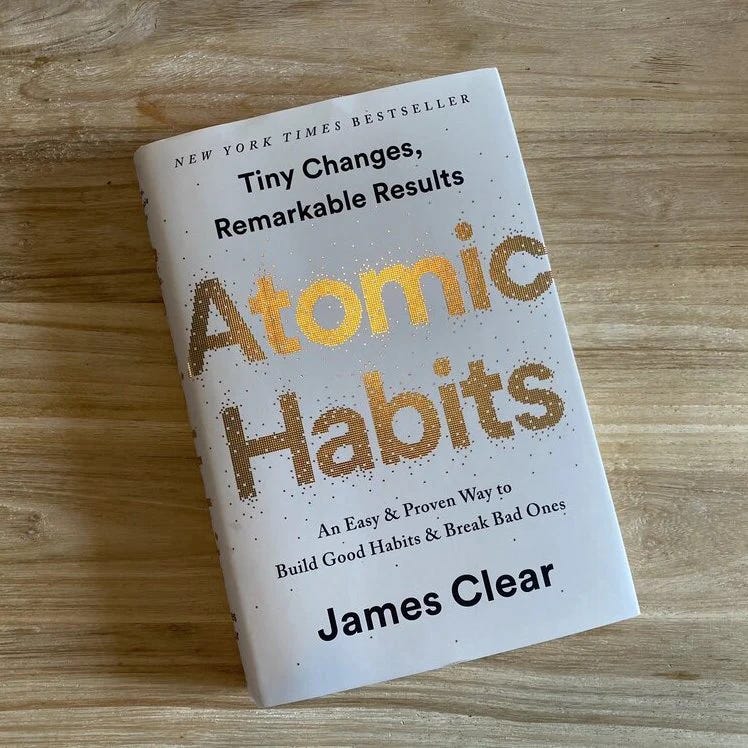Atomic Habits is Overrated - Here's 3 Key Problems You Need to Know.
Don't get me wrong, Atomic Habit is still an all-time great.
Fancy a quote?
“If you can get 1% better each day for one year, you’ll end up 37x better by the time you’re done. Conversely, if you get 1% worse each day for one year, you’ll decline nearly down to zero.”
— James Clear, Atomic Habits
What if I tell you this quote is oversimplified?
What if James Clear hid part of the real picture?
What if “Atomic Habits” is just wrong?
But before you close the tab, let me clarify:
I don’t think Atomic Habits is entirely outrageous, but I argue that James Clear’s approach to habit formation is a bit too idealized—and even sometimes inaccurate.
So, let’s break it down the 3 problems of his book
(P.S. Stay till the end for a free Notion template to track your habits!)
1. James relies heavily on the idea of small, incremental changes.
What if habits just don’t compound over time?
Sure, putting $1 into savings each day compounds over time.
But does every habit work like that?
Many gains exhibit diminishing returns after a certain point.
For example,
You’ll likely see bigger health benefits going from no daily exercise to 1 hour compared to going from 1 hour to 2 hours.
If we’re honest, Atomic Habits oversimplifies the concept of compounding change.
Some habits, like learning an instrument or studying, might benefit from steady practice. But other habits—like exercise or even work—reach a point where more doesn’t always equal better.
Atomic Habit is a great general guideline but not the ultimate “Bible Book”.
2. James overstates the harm in the “Never Miss Twice” rule.
“Lost days hurt you more than successful days help you. If you start with $100, then a 50 percent gain will take you to $150. But you only need a 33 percent loss to take you back to $100. In other words, avoiding a 33 percent loss is just as valuable as achieving a 50 percent gain.”
— James Clear, Atomic Habits
The math and percentages check out. I agree that it’s nice to be consistent and keep the streak on to build long-term habits.
However, here’s the problem with Clear’s logic: it assumes that our energy and motivation levels are linear. But they’re not.
Our capacity for willpower, focus, and consistency is more like an imaginary “wave”—it rises and dips based on several factors, including stress, sleep, and even external events.
On days when you feel drained or unproductive, forcing yourself to stay on track could harm you in the long run.
TLDR: Clear’s Never Miss Twice rule ignores the reality that sometimes missing a day isn’t a setback—it’s a reset.
3. James is right about the power of the environment, but it’s more than just cues.
Where James Clear truly hits the mark in Atomic Habits is his emphasis on environment design. He talks about structuring your surroundings to make good habits easier and bad habits harder.
For instance,
If you want to build a habit of reading, placing a book on your pillow can be a small yet effective cue to remind you at the end of the day.
If you’re working on a writing habit, keeping your workspace clutter-free and filled with the tools you need makes the process smoother.
But here’s the thing: while Clear focuses on the physical environment, the mental and emotional environment plays a huge role too.
Productivity originates from both outwards and inwards.
That’s why I created a free Notion Habit Tracker to help:
Build a second brain.
Declutter your mental space.
Give yourself space to reflect on your emotional journey.
🌱 Take home message
James Clear’s Atomic Habits has undoubtedly helped millions of people build better habits and improve their lives.
His approach to breaking down habits into manageable chunks is revolutionary for some. But like any theory, it’s not foolproof.
So, is Clear wrong?
Not entirely.
But his framework, while incredibly helpful, could be refined by adding these emotional layers and a more realistic understanding of habit formation.
P.S. Don’t forget to claim your free template here.


